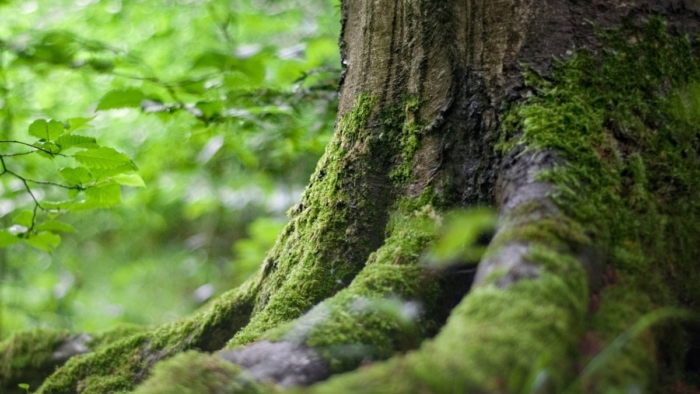The Resurgence of Vernacular Architecture in Sustainable Design
The architectural world has witnessed a remarkable shift towards sustainable and eco-friendly practices and one fascinating trend that has gained momentum in recent years is the resurgence of vernacular architecture. Drawing inspiration from local traditions and indigenous building techniques, architects are rediscovering the timeless wisdom of designing structures that harmonize with their natural surroundings. This blog explores the resurgence of vernacular architecture in sustainable design, highlighting key principles and showcasing notable examples.
Embracing Local Wisdom:
Vernacular architecture is deeply rooted in the traditions and wisdom of a particular region. By embracing local materials, climate considerations, and cultural nuances, architects are reconnecting with a sustainable approach that goes beyond aesthetics. This trend emphasizes a profound understanding of the environment in which a building is situated. The role of vernacular designs in building sustainable homes in Kerala and India, in general, is profound. These designs are deeply rooted in the local context, taking into consideration the climate, culture, and available resources.
Sustainable Principles in Vernacular Design:
Climate Responsiveness: Vernacular architecture inherently adapts to local climates. An excellent example of vernacular design that is well-suited for climate responsiveness is the “Nalukettu” architecture in Kerala, India. Nalukettu houses typically have a central courtyard, providing an open space for family activities and allowing for effective cross ventilation. The courtyard acts as a natural cooling mechanism, enhancing airflow throughout the house. Nalukettu houses are designed to maximize natural ventilation. The strategic placement of windows and openings facilitates the flow of air, promoting cooling breezes throughout the living spaces. In flood-prone areas, the Nalukettu design often incorporates an elevated plinth. This elevation not only protects the house from potential flooding but also enhances ventilation by allowing air to circulate beneath the structure.
- Natural Materials: Traditional building materials like bamboo, thatch, and stone are making a comeback. These materials not only have a lower environmental impact but also contribute to a building’s longevity. Traditional thatched roofs, often made from coconut or palm leaves, are common in Kerala. Such materials contribute to a lower carbon footprint. Traditional Nalukettu homes often feature teakwood construction, a durable and locally available material. Teak is resistant to decay and insects, making it an ideal choice for the humid and rainy climate of Kerala. Thatched roofs made from coconut or palm leaves are common in Nalukettu architecture. These materials are lightweight and provide effective insulation, contributing to the overall energy efficiency of the house.
- Passive Design Techniques: Vernacular architecture often employs passive design strategies, such as proper orientation for optimal sunlight, natural ventilation systems, and the use of shading elements to reduce energy consumption. In traditional Nalukettu architecture, the placement of the central courtyard and the arrangement of rooms around it allow for optimal orientation. This helps in capturing prevailing winds and maximizing natural ventilation. The courtyard acts as a thermal buffer, creating a microclimate within the house. It allows for the penetration of natural light and encourages the flow of cool air, reducing the need for artificial lighting and air conditioning.
- Cultural Aesthetics: Vernacular designs contribute to the preservation of cultural identity. In Kerala, the distinctive architecture reflects the state’s rich cultural heritage and traditions, creating a sense of place and belonging. The courtyard becomes a focal point, often adorned with traditional decorations, sculptures, and sometimes a sacred tulsi plant. It adds a serene and culturally significant ambiance to the entire structure.
- Sustainable Urban Planning: Nalukettu architecture thrives in urbanization by combining adaptive design practices, heritage conservation efforts, and a recognition of its unique cultural and sustainable attributes. The successful integration of Nalukettu into urban landscapes exemplifies its ability to harmonize tradition and modern urban living.
- Community Engagement: Vernacular designs often involve local communities in the construction process, fostering a sense of ownership and promoting sustainable practices within the community. A traditional design like the Nalukettu architecture promotes community engagement by providing spaces for communal activities, celebrating cultural events, involving residents in heritage preservation, and contributing to a shared cultural identity.
Nalukettu architecture, rooted in tradition, incorporates passive design principles that have been refined over generations. This cultural adaptation ensures that the design is not only functional but also resonates with the local way of life.
Conclusion:
The resurgence of vernacular architecture in sustainable design is not merely a nostalgic nod to the past; it represents a forward-thinking approach that prioritizes environmental responsibility. As architects and homeowners alike recognize the value of these age-old principles, we can expect a continued integration of vernacular elements into modern, sustainable designs. This shift not only celebrates cultural diversity but also fosters a more harmonious relationship between the built environment and the natural world.
Share this blog now
Recent Posts
- The Psychology of Sustainable Spaces: How Green Design Affects Mental Health
- Integrating Biodiversity and Landscape with the Architect’s Design: Winterlake
- Creating an Edible Forest in Your Backyard: The Wonders of Tropical Food Forests
- The Resurgence of Vernacular Architecture in Sustainable Design
- Sustainable Luxury: How Eco-Friendly Villas Redefine High-End Accommodation


